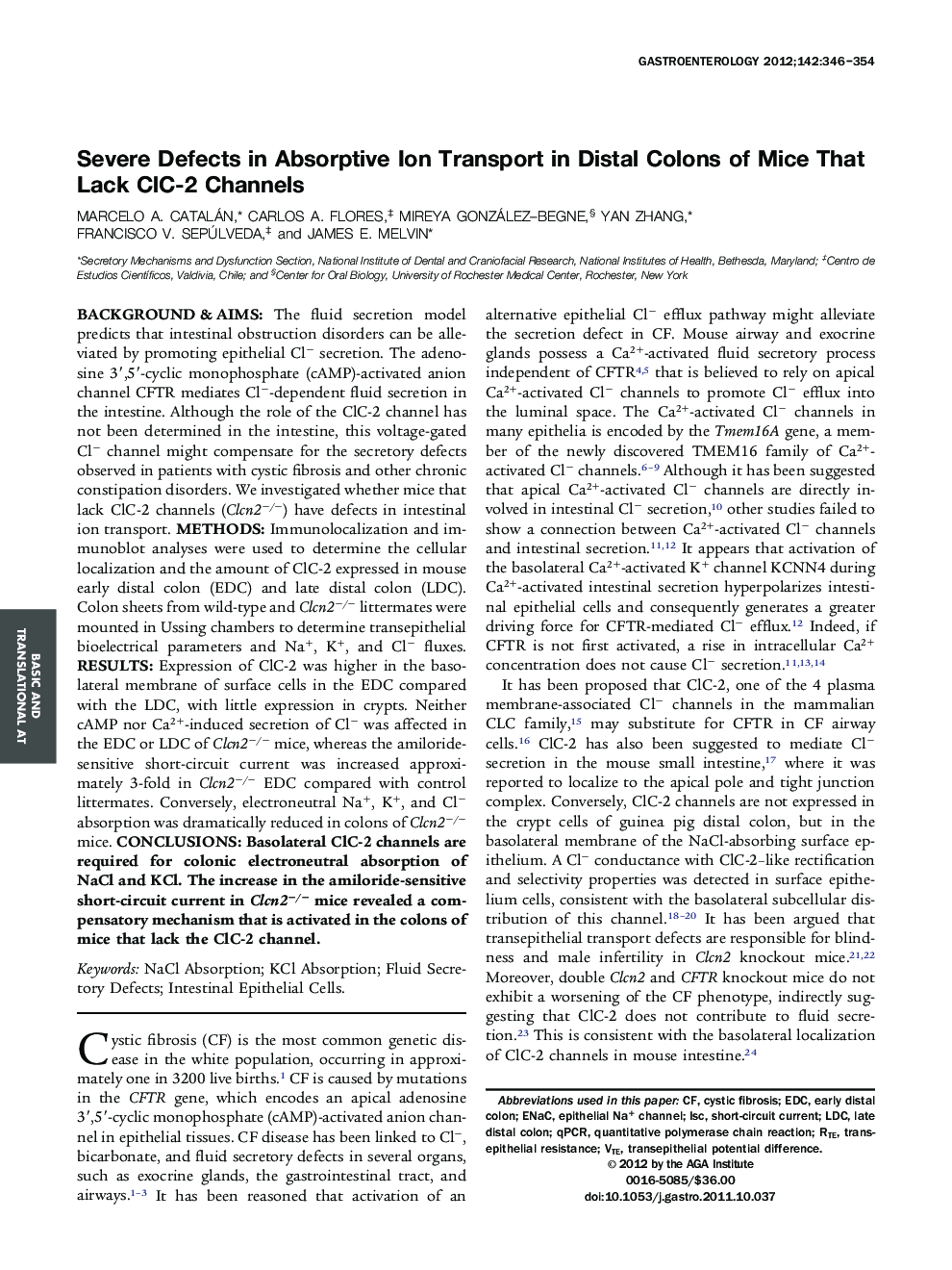| Article ID | Journal | Published Year | Pages | File Type |
|---|---|---|---|---|
| 3294560 | Gastroenterology | 2012 | 9 Pages |
Background & AimsThe fluid secretion model predicts that intestinal obstruction disorders can be alleviated by promoting epithelial Cl− secretion. The adenosine 3′,5′-cyclic monophosphate (cAMP)-activated anion channel CFTR mediates Cl−-dependent fluid secretion in the intestine. Although the role of the ClC-2 channel has not been determined in the intestine, this voltage-gated Cl− channel might compensate for the secretory defects observed in patients with cystic fibrosis and other chronic constipation disorders. We investigated whether mice that lack ClC-2 channels (Clcn2−/−) have defects in intestinal ion transport.MethodsImmunolocalization and immunoblot analyses were used to determine the cellular localization and the amount of ClC-2 expressed in mouse early distal colon (EDC) and late distal colon (LDC). Colon sheets from wild-type and Clcn2−/− littermates were mounted in Ussing chambers to determine transepithelial bioelectrical parameters and Na+, K+, and Cl− fluxes.ResultsExpression of ClC-2 was higher in the basolateral membrane of surface cells in the EDC compared with the LDC, with little expression in crypts. Neither cAMP nor Ca2+-induced secretion of Cl− was affected in the EDC or LDC of Clcn2−/− mice, whereas the amiloride-sensitive short-circuit current was increased approximately 3-fold in Clcn2−/− EDC compared with control littermates. Conversely, electroneutral Na+, K+, and Cl− absorption was dramatically reduced in colons of Clcn2−/− mice.ConclusionsBasolateral ClC-2 channels are required for colonic electroneutral absorption of NaCl and KCl. The increase in the amiloride-sensitive short-circuit current in Clcn2−/− mice revealed a compensatory mechanism that is activated in the colons of mice that lack the ClC-2 channel.
